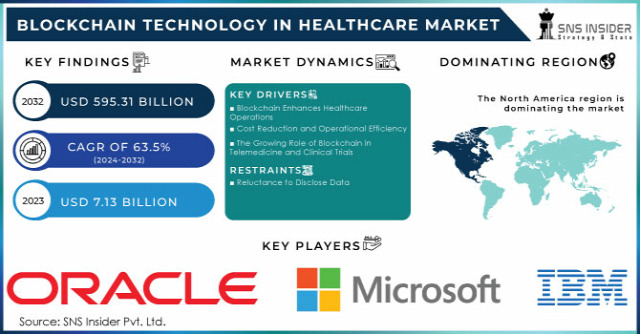The Conversational AI in Healthcare Market Revenue was valued at USD 10.80 billion in 2023 and is expected to grow substantially, reaching USD 80.50 billion by 2032. This represents a strong CAGR of 25.02% over the forecast period from 2024 to 2032. The integration of conversational AI technologies into healthcare settings is revolutionizing patient care, administrative workflows, and overall healthcare management, driving the rapid market expansion.

Key Market Drivers
The growing adoption of artificial intelligence (AI) technologies, particularly natural language processing (NLP), is one of the primary drivers behind the surge in conversational AI in healthcare. These technologies are enabling healthcare providers to offer enhanced patient experiences, automate routine tasks, and improve decision-making processes. Conversational AI systems are used for a range of applications, from virtual assistants and chatbots to more sophisticated systems that assist with diagnostic support, patient monitoring, and medication management.
Conversational AI allows healthcare professionals to engage with patients in real-time, providing instant responses to queries and offering personalized advice and recommendations. This has been particularly beneficial in telemedicine, where AI-driven chatbots have helped expand access to healthcare services, especially in remote and underserved areas. The ability to offer 24/7 support and immediate assistance to patients is contributing to the growing demand for conversational AI solutions in healthcare settings.
Additionally, the increasing prevalence of chronic diseases, the growing aging population, and the need for efficient management of patient data are further accelerating the adoption of AI-driven tools to streamline healthcare operations. As the healthcare industry faces challenges related to labor shortages, administrative overload, and rising costs, conversational AI has emerged as a powerful solution for improving efficiency and reducing operational bottlenecks.
Technological Advancements
The integration of machine learning (ML) and deep learning (DL) algorithms into conversational AI systems has significantly improved their capabilities. These technologies allow conversational AI platforms to learn from previous interactions and enhance their accuracy over time, making them more effective at handling complex medical queries. Furthermore, advances in voice recognition and sentiment analysis are enabling AI systems to engage in more natural and empathetic conversations with patients.
As healthcare providers increasingly embrace cloud-based solutions, conversational AI is becoming more scalable and accessible. Cloud-based platforms also enable seamless integration with other healthcare systems, such as electronic health records (EHRs), allowing AI systems to access and analyze patient data in real time. This level of integration is essential for ensuring that conversational AI solutions can deliver accurate, personalized, and contextually relevant healthcare support.
Get Free Sample Report@ https://www.snsinsider.com/sample-request/4498
Market Segmentation
The conversational AI in healthcare market is segmented by technology, application, end-user, and region. By technology, the market is divided into natural language processing (NLP), machine learning (ML), speech recognition, and others. Among these, NLP holds the largest share, as it plays a critical role in enabling AI systems to understand and respond to human language effectively.
In terms of application, the market is categorized into virtual assistants, customer support, healthcare applications, and others. Virtual assistants and chatbots are particularly popular in patient engagement and customer service, where they are used to handle appointment scheduling, provide medication reminders, and answer common patient inquiries.
Geographically, North America holds the largest market share due to the strong presence of advanced healthcare infrastructure and early adoption of AI technologies. However, the Asia-Pacific region is expected to witness the fastest growth during the forecast period, driven by rising healthcare investments, increasing healthcare digitization, and large-scale adoption of AI solutions in countries like China and India.
Market Outlook
The conversational AI in healthcare market is poised for rapid expansion as more healthcare organizations recognize the potential of AI to improve patient outcomes, streamline operations, and reduce costs. AI-powered solutions are expected to play an increasingly integral role in the delivery of healthcare services, from enhancing the patient experience to supporting healthcare professionals in clinical decision-making.
Healthcare systems are likely to continue integrating conversational AI technologies into their daily operations, creating more personalized and efficient patient experiences. As regulatory bodies adapt to the rapid technological advancements, the market is expected to see a steady increase in investment and innovation. Furthermore, as the technology matures, the cost of deploying conversational AI solutions will decrease, enabling broader adoption across healthcare facilities of all sizes.
About Us
SNS Insider is one of the leading market research and consulting agencies that dominates the market research industry globally. Our company's aim is to give clients the knowledge they require in order to function in changing circumstances. In order to give you current, accurate market data, consumer insights, and opinions so that you can make decisions with confidence, we employ a variety of techniques, including surveys, video talks, and focus groups around the world.
Contact Us
Akash Anand – Head of Business Development & Strategy
Email: info@snsinsider.com
Phone: +1-415-230-0044 (US) | +91-7798602273 (IND)





